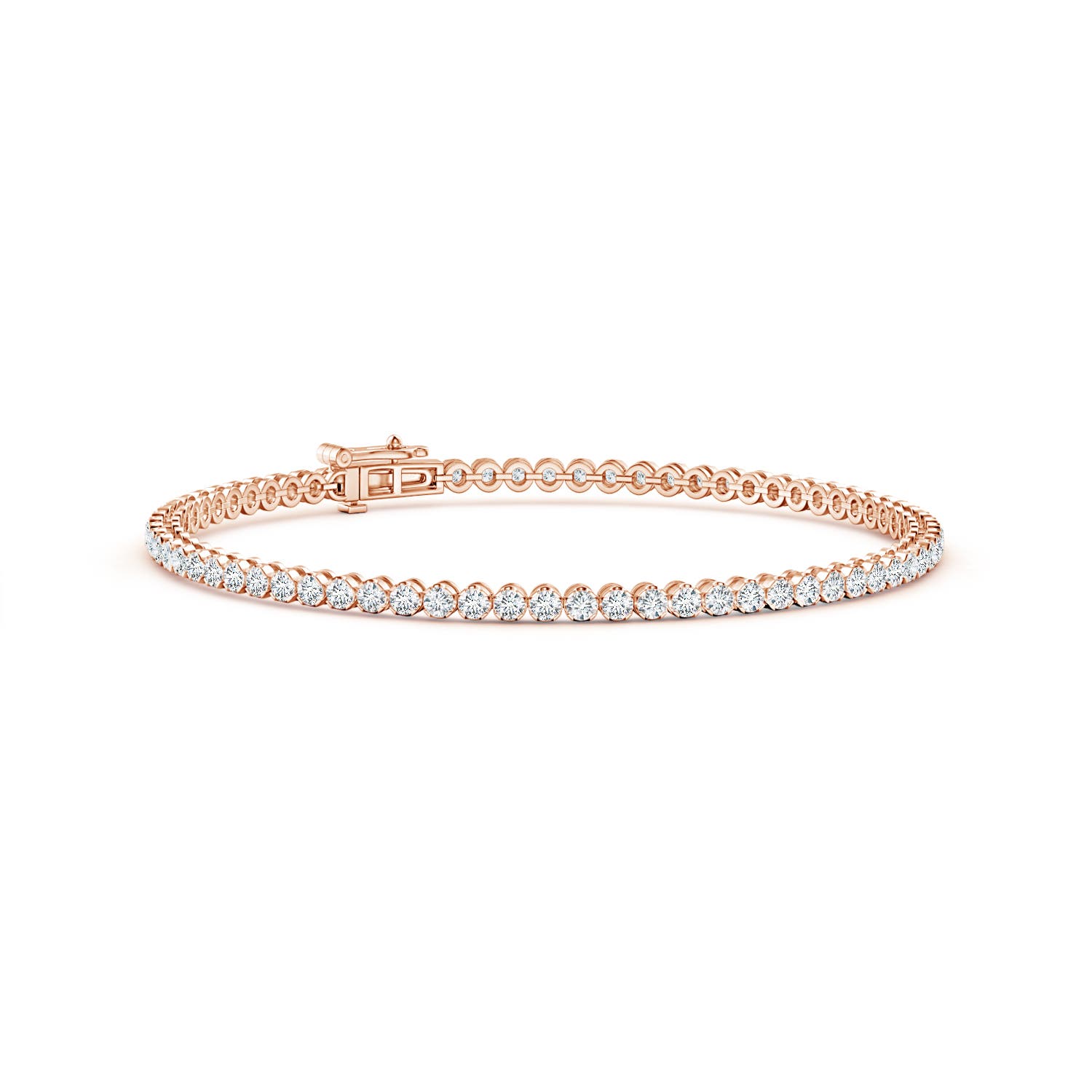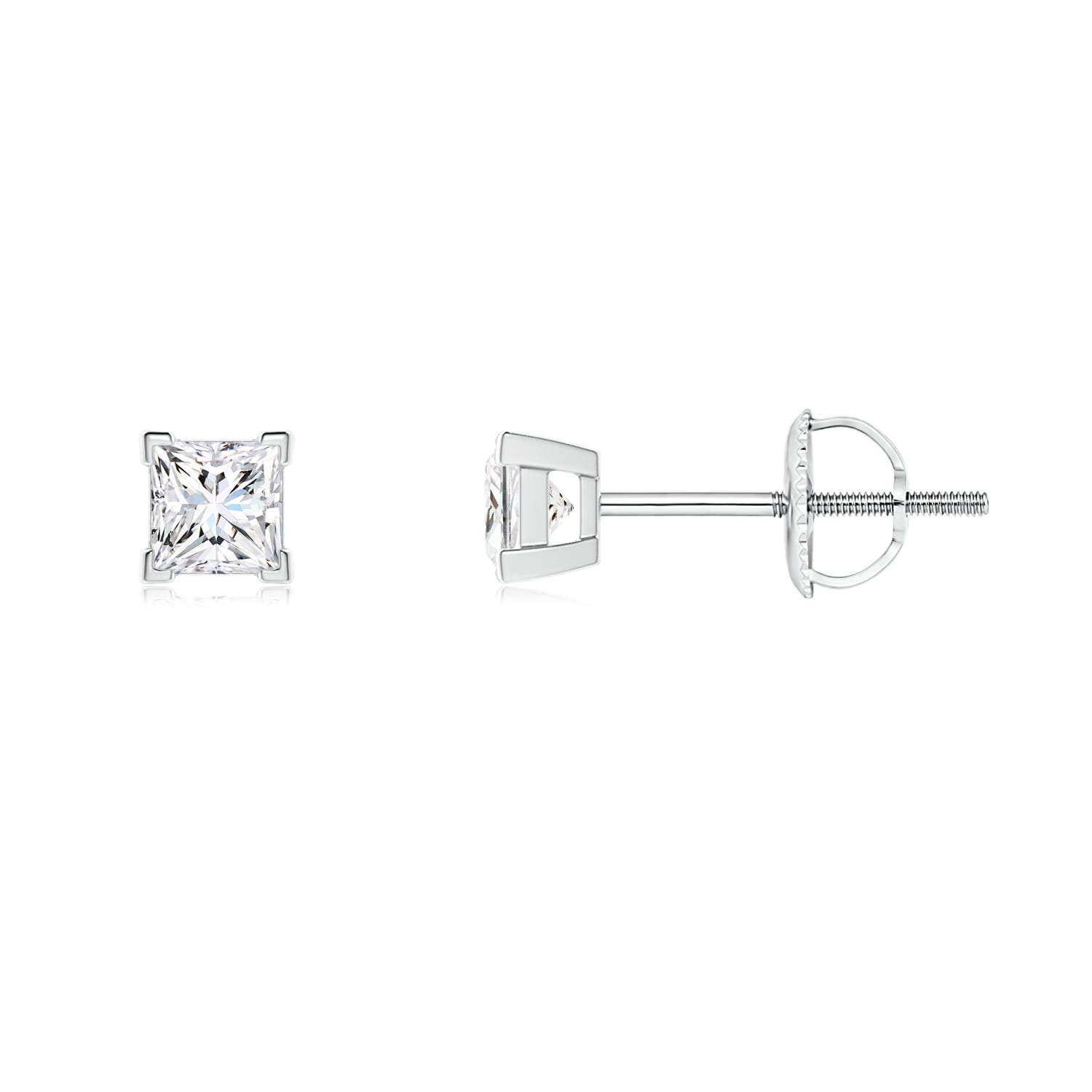Are you on the hunt for women’s diamond jewelry that won’t break the bank?
Well, if you’re all about that balance between quality and cost, then you’re in for a treat with G diamond quality.
What sets G color diamonds apart? Imagine a diamond that’s practically indistinguishable from the premium D, E or F grades, but without the hefty price tag. That’s the beauty of G color diamonds. They offer a near-colorless appearance making your diamond jewelry look stunning without breaking the bank. Let’s explore everything there is to know about G color diamonds.
GIA Diamond Color Grading – What Is It?
The GIA (Gemological Institute of America) is a leading geological research institute that developed the D to Z diamond grading scale, which is now the gold standard in the industry. This scale was devised to iron out the inconsistencies in previously used grading systems. Therefore, when you see a diamond with a GIA grading report, you can trust that the color grade is accurate and reliable.
The GIA scale begins at the letter D, representing colorless diamonds, and progresses to Z, representing diamonds with yellow or brown hues. While the change from one grade to another is subtle, the overall difference is quite noticeable. Let’s take a look at the grades:
1. Colorless (D-F)
D color diamonds are completely colorless and are the highest color grade a diamond can receive. E and F diamonds have very slight traces of color that are invisible to the naked eye.
2. Near Colorless (G-J)
G and H-color diamonds have noticeable colors only when compared to the higher grades. I and J-color diamonds have a slightly detectable and faint color.
3. Faint (K-M)
K, L and M have a faint yellow hue.
4. Very Light (N-R)
N to R color diamonds have a more apparent light yellow hue than faint color diamonds.
5. Light (S-Z)
S to Z color diamonds have a brown or light yellow hue.
Diamonds outside the D to Z range are referred to as fancy colors. These diamonds come in various colors, including blue, pink, yellow, orange, green, etc., with red being the rarest of them all. Fancy color diamonds are unique and often more expensive than colorless or near colorless diamonds due to their rarity and the demand for their unique colors.
What Is the Meaning of G Color Diamond?
A G-color diamond falls within the ‘near colorless’ range. These diamonds showcase a beautiful balance between warmth and brightness. They typically appear colorless to the naked eye, making them an excellent choice for anyone looking for a high-quality diamond without the premium tag attached to completely colorless diamonds.
G Color Diamonds vs. Other Color Grades
G color diamonds possess minimal traces of color and appear colorless to the naked eye. Compared to diamonds in lower color grades such as H, I, or J, G color diamonds exhibit a crisper, cooler appearance with less noticeable yellow tint. On the other hand, diamonds with higher color grades like D, E, and F are considered completely colorless and typically come with a higher price tag due to their rarity.
However, the visual difference between a G color diamond and those of higher grades may be subtle and not easily discernible to everyone, making them an excellent choice for those who want a balance of quality and affordability.
Value of G Color Diamonds
G-color diamonds are less expensive than diamonds in the colorless range, offering savings of around 10 to 25%. The significant price difference is due to the barely noticeable color.
For example, a 1-carat round brilliant cut G color diamond with excellent cut, and clarity might typically cost around $4,000 to $6,000. In comparison, a similar diamond in the D, E, or F color grade might fall within the price range of $6,000 to $8,000 per carat, while a diamond in the H, I, or J color grades might range from $3000 to $4,500 per carat. However, note that these values can vary based on various factors like diamond cut, clarity, fluorescence and market demand.
Factors To Consider When Buying Diamond Color G
Thinking of buying a G color diamond? Here are some things you should keep in mind:
- Shape: The shape of a diamond affects how it reflects color. Some cuts, such as oval and radiant cuts, reflect more color than round diamonds and emerald cuts.
- Cut: Diamonds with more facets have more brilliance than diamonds with fewer facets. Read about the different types of diamond cuts.
- Clarity: If a diamond has impurities and inclusions, it becomes more visible on diamonds with fewer facets. A diamond with more facets, on the other hand, can hide some of these imperfections.
- Setting: G-color diamonds and halo settings are a match made in diamond heaven—they look stunning, especially if the halo is set with smaller stones. Solitaire settings are also a good option, as they put a spotlight on the diamond. G-color diamonds and pave settings, as well as channel settings, are other fabulous options to consider.
- Metal: White gold or platinum look best with G-color diamonds, as they help mask the traces of yellow in them. Nevertheless, a G diamond also looks fab against yellow or rose gold—it’s pretty versatile.
FAQs
1. How much do G color diamonds cost?
A one-carat G color diamond costs approximately $6,000, with prices varying based on other attributes like cut and clarity.
2. Should I buy a G color diamond?
A G color diamond strikes the perfect balance between quality and price, making them popular choices, especially for engagement rings.
3. Does a diamond with a G color grade exhibit sparkle?
Absolutely! G color diamonds exhibit brilliant sparkle due to their minimal color tint.
4. Is a G color diamond good?
G color diamonds are valued for their quality and affordability, making them a favorable choice.
5. How rare are G diamonds?
G diamonds are not considered rare, but they’re still highly desirable.
































